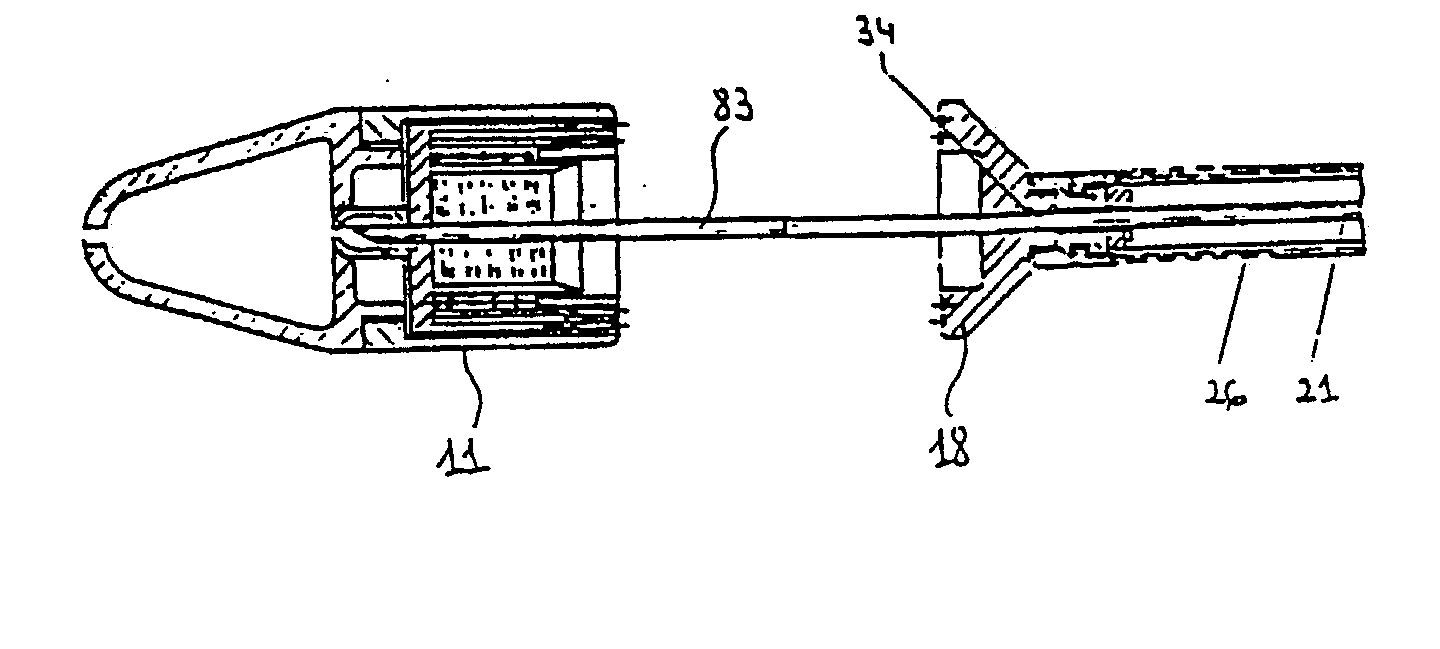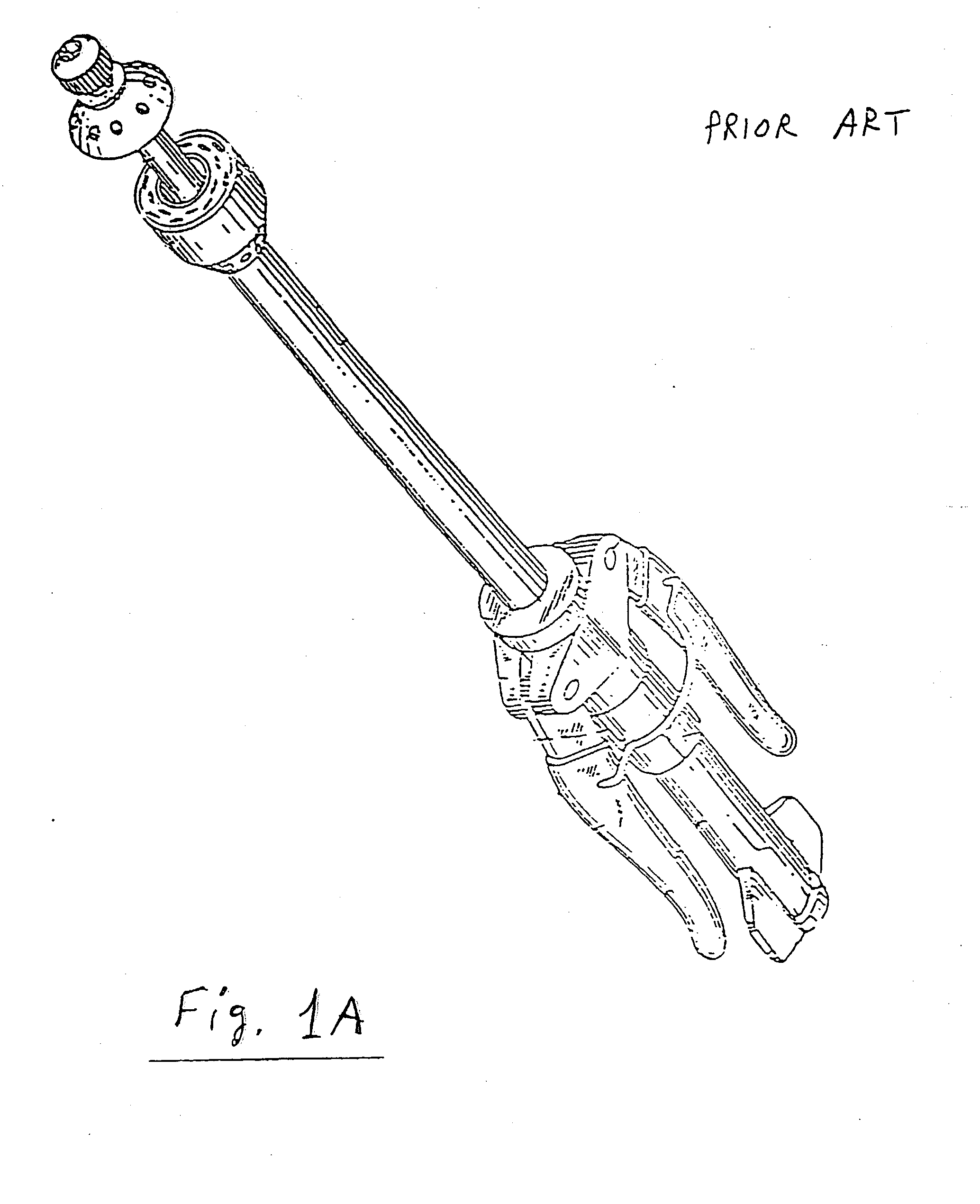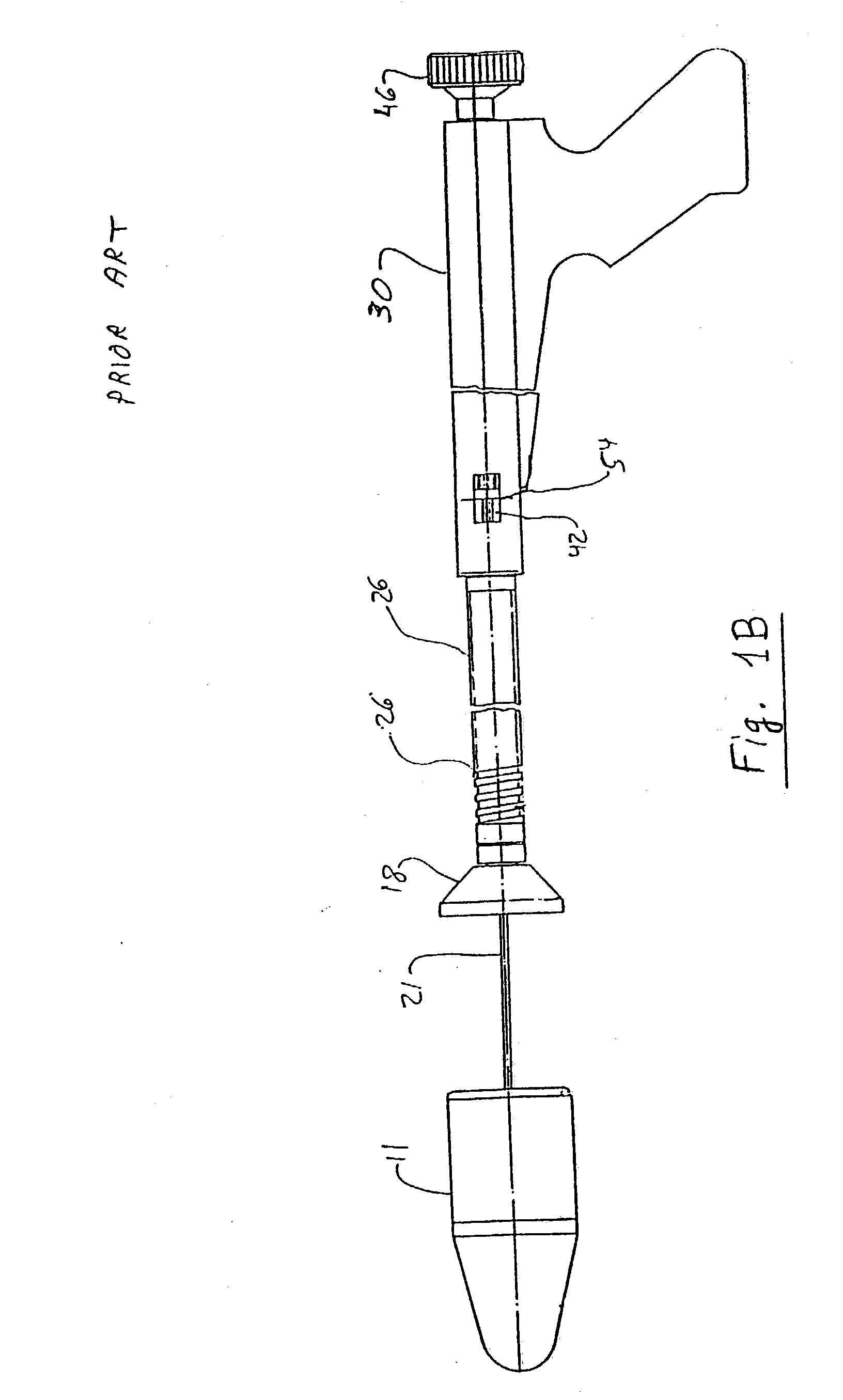Flexible annular stapler for closed surgery of hollow organs
a flexible, annular technology, applied in the direction of surgical staples, stapling tools, medical science, etc., can solve the problems of difficult operation on the esophagus or stomach, difficult temporary sewing of the butt ends, and difficult to reach or complicated parts
- Summary
- Abstract
- Description
- Claims
- Application Information
AI Technical Summary
Benefits of technology
Problems solved by technology
Method used
Image
Examples
Embodiment Construction
[0067] The present invention is of methods and apparatus for performing anastomosis of the digestive tube under closed surgery conditions. Specifically, the present invention includes an improved flexible annular stapler and can be used to conveniently and quickly perform such anastomosis at any location and in conjunction with any of a large variety of surgical procedures, which may include end-to-end, end-to-side and side-to-side joints.
[0068] The principles and operation of an improved annular stapler, as well as new surgical methods utilizing it, according to the present invention may be better understood with reference to the drawings and the accompanying description.
[0069] Referring now to the drawings, FIG. 2 illustrates the end portion of a flexible stapler similar to that of the French patent, but with an improved head-to-anvil alignment control. Flexible cable 21 is slidingly disposed inside flexible hose-like body 26 along its entire length. A segment 83 of the cable, a...
PUM
| Property | Measurement | Unit |
|---|---|---|
| diameter | aaaaa | aaaaa |
| flexible | aaaaa | aaaaa |
| electrically | aaaaa | aaaaa |
Abstract
Description
Claims
Application Information
 Login to View More
Login to View More - R&D
- Intellectual Property
- Life Sciences
- Materials
- Tech Scout
- Unparalleled Data Quality
- Higher Quality Content
- 60% Fewer Hallucinations
Browse by: Latest US Patents, China's latest patents, Technical Efficacy Thesaurus, Application Domain, Technology Topic, Popular Technical Reports.
© 2025 PatSnap. All rights reserved.Legal|Privacy policy|Modern Slavery Act Transparency Statement|Sitemap|About US| Contact US: help@patsnap.com



